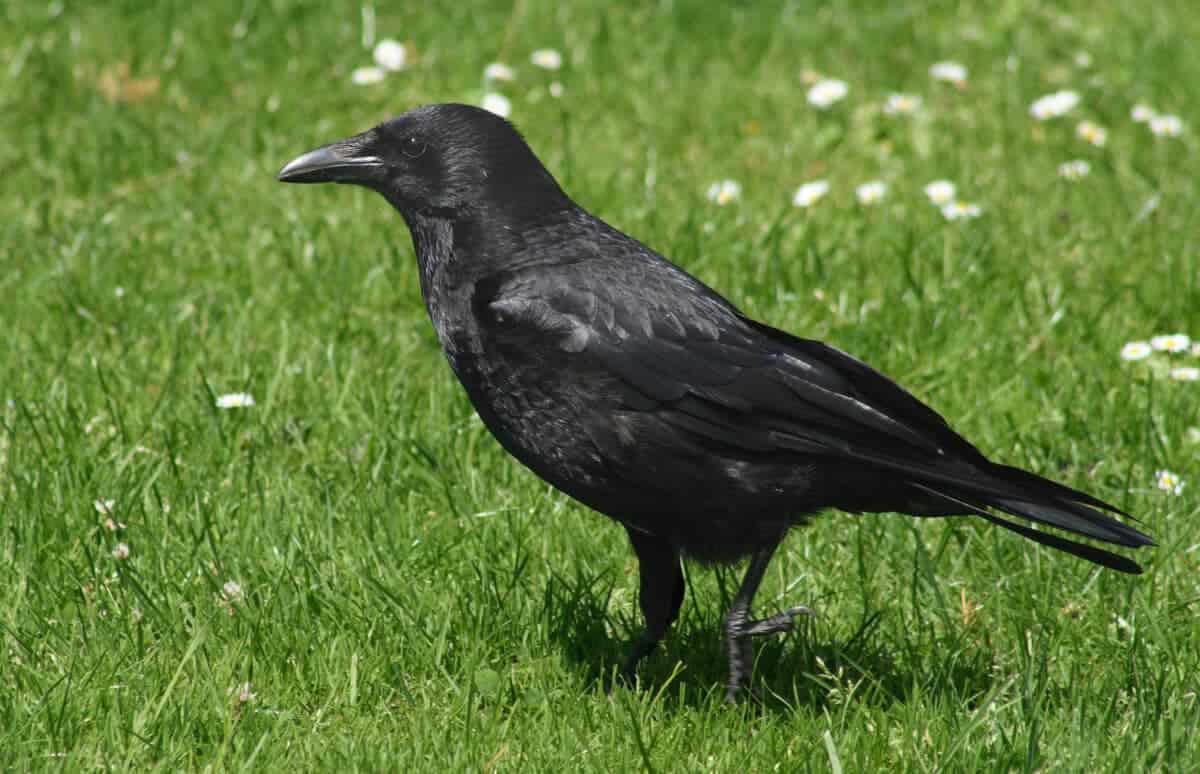In our fast-paced, modern world where nature can feel disconnected, a woman forms an extraordinary friendship with a wild crow. This is the tale of a woman and her feathered companion, Sharkey, a narrative that beautifully illustrates the profound connections between humans and wildlife.

Befriending a Wild Crow
Kira’s journey with crows began with a five-year friendship with a crow named T. Sadly, T passed away in 2021, leaving Kira heartbroken and doubtful that she could ever form such a bond again. However, during a walk, Kira noticed another crow was following her. This crow, whom Kira named Sharkey, slowly wiggled her way into Kira’s heart, establishing an unexpected bond.
This coexistence has fostered mutual respect and curiosity between Kira and Sharkey. Kira feels privileged to know a wild crow and to have such a close relationship with her. Sharkey follows Kira on walks and sits with her in the garden. Their bond is a testament to crows’ incredible intelligence and social nature.
Interestingly, Sharkey’s relationship with Kira has also influenced other birds in the area. Steller Jays, noticing the attention Sharkey receives, has started imitating crows to convince Kira to give them peanuts.
Mimicry of Steller Jays
Steller Jays are known to mimic other organisms. They can imitate various sounds from their environment, including the calls of other birds, mammals, and even mechanical noises. Researchers have observed Steller’s Jays skillfully mimicking the sounds of squirrels, Northern Flickers, Northern Goshawks, White-breasted Nuthatches, and even the sound of water sprinklers. This ability to mimic is not just an amusing trait but also serves practical purposes in their survival and communication strategies. The Steller’s Jay’s talent for mimicry showcases their intelligence and adaptability within the diverse ecosystems they inhabit.
Gestures of Friendship
Unlike other crows, Sharkey often brings food, like bread, and leaves it in Kira’s fountain. Kira wonders if these are offerings from Sharkey or simply a place for her to store food for later.
One of the most extraordinary aspects of Kira’s experience is meeting Sharkey’s fledglings. It’s a rare honor for a human to be introduced to a crow’s young, as it involves a significant level of trust from the parent birds. Kira has met two of Sharkey’s fledglings so far, maintaining a respectful distance to ensure they retain a healthy fear of humans.
Kira has gained a deep understanding of Sharkey’s life, including her roosting habits. In summer, Sharkey roosts near Kira’s house, while in winter, she joins over 16,000 other crows at the University of Washington’s North Creek Wetland restoration area. This gathering of crows is a fascinating phenomenon, where they seem to discuss their day before settling in for the night.
Our Connection with Nature
The bond between Kira and Sharkey is a reminder of the interconnectedness of all living beings. It challenges us to look beyond our human-centric view of the world and appreciate the rich, complex lives of the creatures around us. Kira’s story with Sharkey is not just about a woman and a crow; it’s a narrative about coexistence, respect, and the unexpected friendships that can arise when we open our hearts to the natural world.
How to make friends with crows:
- Offer Food: Crows are intelligent and can remember faces, especially those associated with food. Offering unsalted peanuts or other safe, crow-friendly food can attract them and build trust.
- Be Consistent: Regularly visiting the same spot and offering food at the same time each day can help crows recognize and remember you.
- Observe and Respect: Spend time observing the crows, understanding their behavior and respecting their space. Avoid making sudden movements or noises that might scare them.
- Patience is Key: Building a relationship with wild animals takes time. Be patient and persistent in your efforts.
- Avoid Touching: Remember that crows are wild animals. Maintaining a respectful distance and avoiding trying to touch or handle them is important.
You might also enjoy:
Conserving South America’s Smallest Wild Cat – The Guina
Watch: Unraveling the Mystery of Army Ants’ Death Spiral
Watch: The Social Coyote Spotted Playing with Neighborhood Dogs Finds Forever Mate in a Sanctuary.
Join our Forum for free today!

- The Bond Between a Wild Baby Bison and Her Rescuer - July 20, 2024
- An Excited Husky’s First Ever Time in Snow - July 20, 2024
- Top 20 Colorful Species To Brighten Your Day - July 14, 2024


